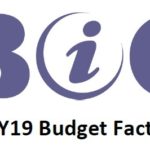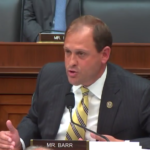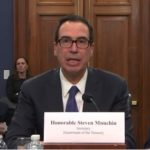
What is IDA?
The International Development Association (IDA) is the World Bank Group’s concessional funding pool for low-income and post-conflict countries. This funding is provided at either a zero or a very low interest rate. Unlike the International Bank for Reconstruction and Development (IBRD) pool, raises its funds through global financial markets and interest from loans paid by borrowing countries, IDA funds are largely replenished every three years by donor countries.[1]
IDA negotiation meetings are arranged by World Bank management, and participants are known as “deputies.” IDA deputies are typically individuals at the ministerial level from participant member countries. The final reports produced by the deputies outline the key objectives and indicators for measuring the Bank’s progress around certain themes during the three year replenishment period. The report is approved by the Board of Directors, and transmitted to the Board of Governors for final approval.
The highest contributors to IDA are typically able to take leadership in shaping its agenda. Since 1960, the U.S. has contributed the most to IDA, followed by Japan and the UK. However, the portion of U.S. contributions has been steadily falling, and was overtaken by the UK in 2007 as the largest donor for IDA15. The U.S. regained the top spot in IDA16, but lost it again in IDA17. In that replenishment cycle, the UK contributed around $4.6 billion, or 13% of total contributions. The U.S. contributed $3.9 billion, or 11% of the total. Japan and Germany came in third and fourth at 10% and 6%, respectively. Donations to IDA are part of the formula for calculating voting shares in both IBRD and IDA. The U.S. maintains the highest share of voting power in IBRD with 15.97% and IDA with 10%. Japan has the next highest share at 7.4% of IBRD and 10% of IDA.
IDA as a Platform for Policy Reform
Since IDA’s inception, donor governments have used the replenishment process to advance their foreign policy priorities. Since the IDA9 replenishment, which coincided with widespread criticism of the Bank around specific controversial projects, donors also started to use the negotiation process to push for reform at the World Bank itself. IDA9 negotiations occurred around the time of the passage of the Pelosi Amendment by the U.S. Congress. The final agreement included requirements inspired by Pelosi, and led to a major revision of the Bank’s environmental policy. In the following replenishment process, the U.S. Congress also played a major role in Bank reform around IDA by threatening to withhold IDA funding until the Bank agreed to create the Inspection Panel.
While IDA replenishment has been a useful vehicle for policy reform on some issues—in particular those related to reducing environmental impacts—less progress has been made on specific social or human rights issues. For example, gender has been a “special theme” for replenishment since IDA16, and has been referenced in agreements as far back as IDA10. However, many experts and organizations that work on issues related to gender and development agree that most of the objectives and indicators adopted through IDA replenishment negotiations have not been successful in generating meaningful reform, in part because the indicators are insufficient.
IDA18 Information
IDA Replenishment negotiations typically occur over the course of three meetings, plus a final pledging session. The first meeting of the IDA18 process took place in Paris March 14-15, 2016, the second in Myanmar June 21 – 24, and the third meeting will take place October 11-12 in Washington D.C. in October. The final pledging session will be in December 2016.
The “special themes” for the IDA18 replenishment include:
- Climate Change
- Gender Equality
- Fragile and Conflict-Affected States (FCS)
- Jobs and Economic Transformation
- Governance and Institutions
Climate Change, Gender, and FCS are carried over from IDA16, while Jobs and Governance are new themes for IDA18.
Click here to see the latest recommendations on the IDA18 replenishment from BIC and Conservation International. Click here to see BIC’s full comments on the IDA draft Deputies Report.
[1] A small amount of funding is also transferred from IBRD, and IDA has recently taken steps to enable it to raise money in capital markets as well.
Updates
 Senate Appropriators Send a Message to the World Bank on Accountability
Senate Appropriators Send a Message to the World Bank on AccountabilityCommunity discussion on a World Bank Inspection Panel case in Egypt Last week, S...
 Trump Administration’s FY19 Budget Request
Trump Administration’s FY19 Budget RequestThe Trump Administration’s FY19 budget was released this week. While some...
 House Financial Services Committee Passes World Bank Accountability Act of 2017
House Financial Services Committee Passes World Bank Accountability Act of 2017The House Financial Services Committee passed the World Bank Accountability Act...
 Secretary Mnuchin Testifies on IDA before House Appropriators: 3 Main Takeaways
Secretary Mnuchin Testifies on IDA before House Appropriators: 3 Main TakeawaysYesterday, Secretary Mnuchin made his first trip to the Hill to defend the White...
IDA18 and Forests
The World Bank is ideally positioned to support deforestation free development in IDA countries. The IDA replenishment process offers an opportunity to promote consistency across Bank operations with respect to forests and forest communities, and to ensure Bank rhetoric around climate and forests is supported by its mainstream lending portfolio—rather than only through trust fund operations, such as the FCPF and the FIP.
Although protecting forests is one of the most important and cost effective climate change mitigation and poverty alleviation solutions, policy commitments and indicators around forests in the IDA17 replenishment agreement were noticeably absent and the Bank’s current work in the forest sector is highly marginalized. The proportion of its lending portfolio devoted to sectors that are primary drivers of deforestation is currently orders of magnitude greater than its investments in forestry. Investments in drivers of deforestation often fail to identify risks to forest ecosystems, employ mitigation mechanisms to prevent deforestation and degradation, or monitor and quantify project-level deforestation. The Bank has failed to provide sufficient staffing or budget to ensure that project teams benefit from forest expertise, and has failed to mainstream recognition of the link between forests and poverty.
Promoting sustainable forest management and reducing deforestation are integral in mitigating climate change, promoting the resiliency of ecosystems and communities, and reducing poverty. Preserving forests and securing land tenure both play a major part in meeting the World Bank’s twin goals of reducing poverty and promoting shared prosperity. Due to the important role that forests play in many IDA countries, sustainable forest management and reducing deforestation should be addressed in IDA 18 by:
- Securing land tenure for forest-dependent communities and smallholder farmers. In order to ensure forest protection and sustainable ecosystems, their land tenure must be well-defined and secure.
- Ensuring that the critical role of reducing deforestation and protecting forests is acknowledged in the removal of greenhouse gases (GHGs) from the atmosphere, in conserving and increasing carbon stocks, and increasing resilience to climate change.
- Promoting a “green economy” future in which nature-based approaches and ecosystems services are integrated into national development planning to ensure sustainable development and institutional capacity-building toward supporting country and community resilience to climate change.
Protecting forests and securing land tenure is especially relevant in IDA countries. IDA countries contain vast amounts of forested land, which millions of forest communities depend on for their livelihoods. In fact, forests provide rural communities 22% of their income. In many IDA countries, emissions from land use account for the vast majority of total emissions. For example, emissions from land use account for 75% of Kenya’s total emissions. Securing land tenure has been proven to lower deforestation rates time and again, and IDA countries often have weak institutions that do not have the resources to secure land titles, or do not have the means of enforcing these land titles.
Integrating Forests in Climate Change Special Theme
Integrating Forests in Governance and Gender Special Themes
Nowhere is the link between forest protection and poverty reduction as clear as in IDA countries. Reducing deforestation through methods such as land titling is an extremely cost effective way to reduce poverty and mitigate climate change. This timely opportunity, in the wake of the COP 21 commitments, should not be missed in this important replenishment process. Through IDA, the World Bank must avoid falling behind in international progress by making commitments to reduce global deforestation.


